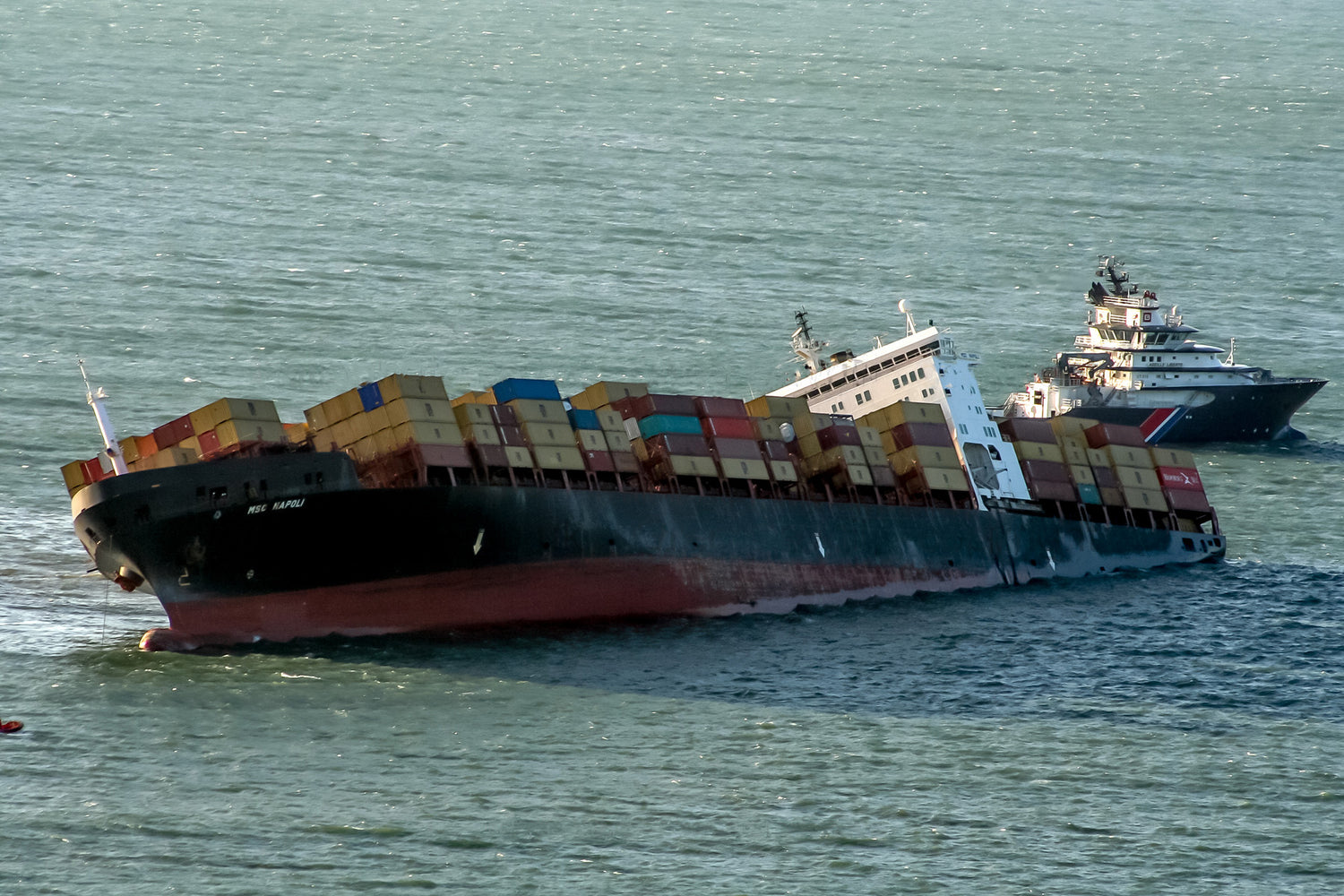
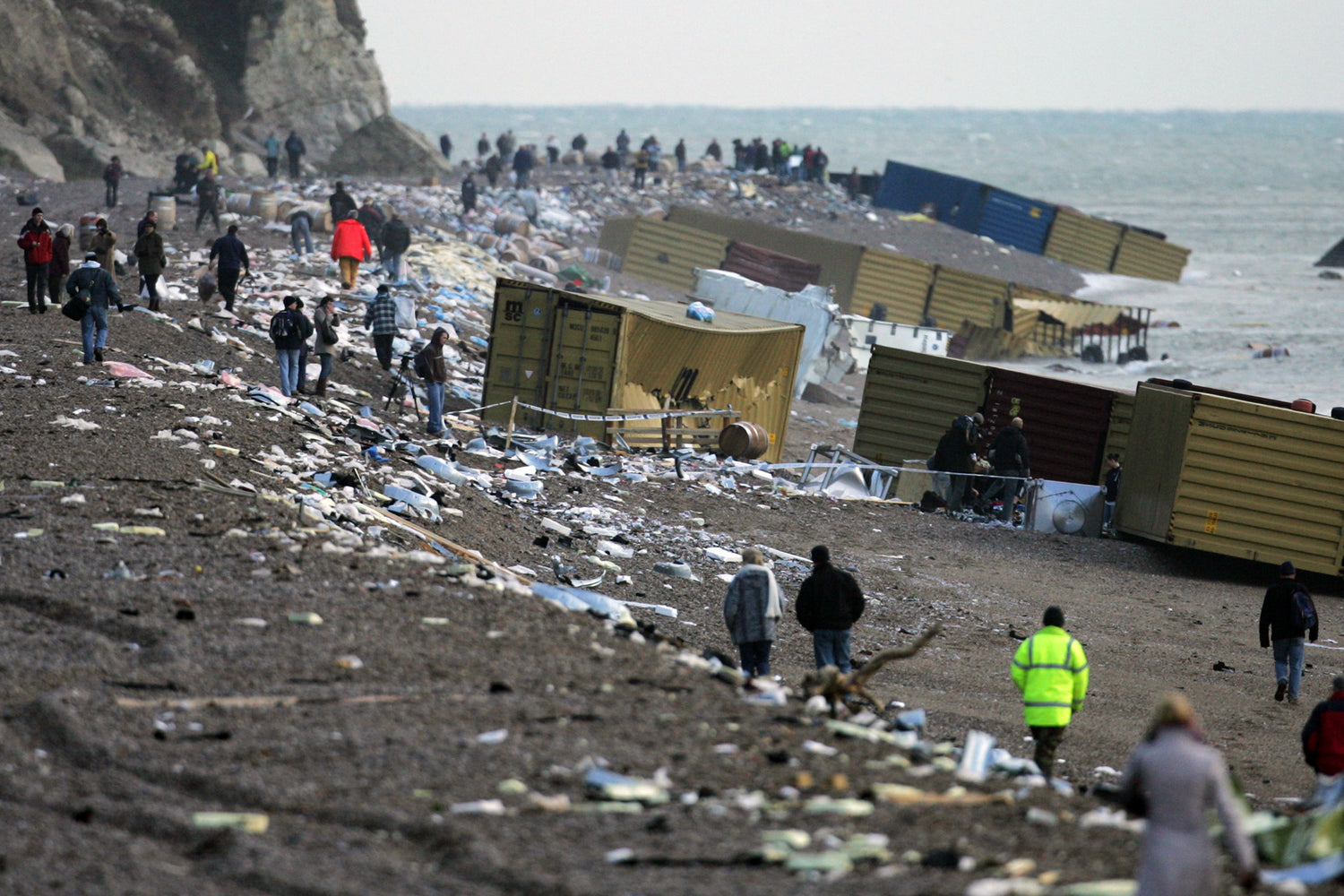
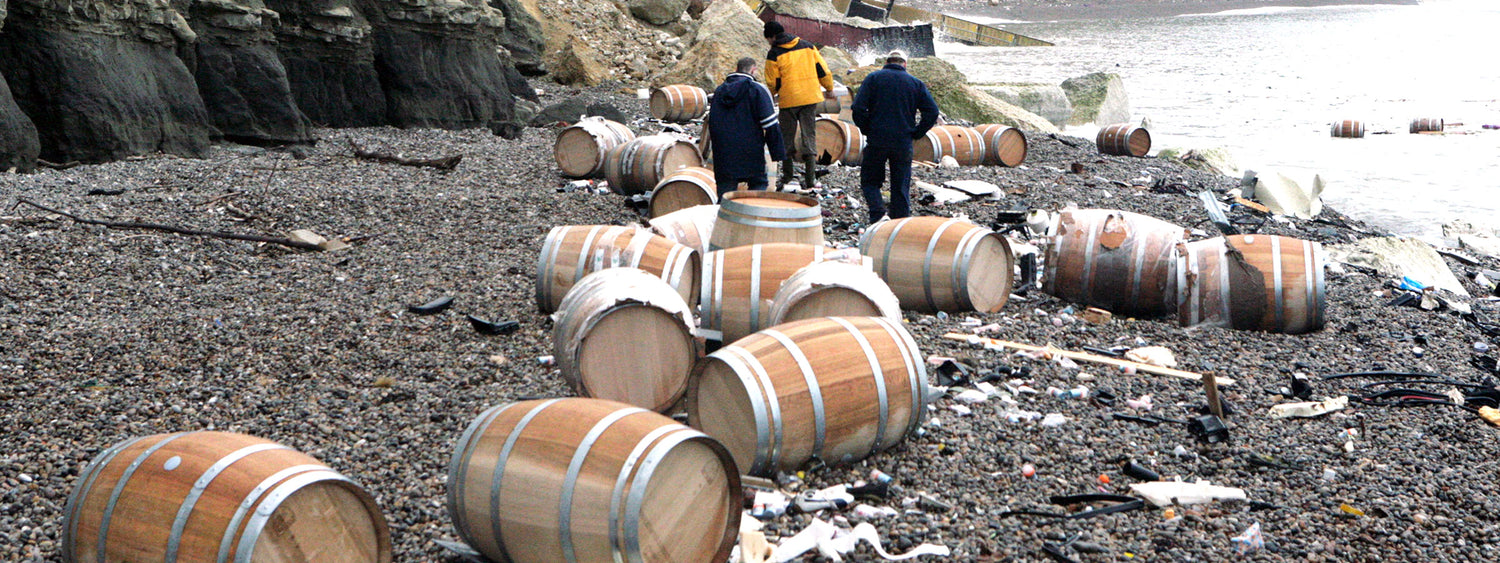
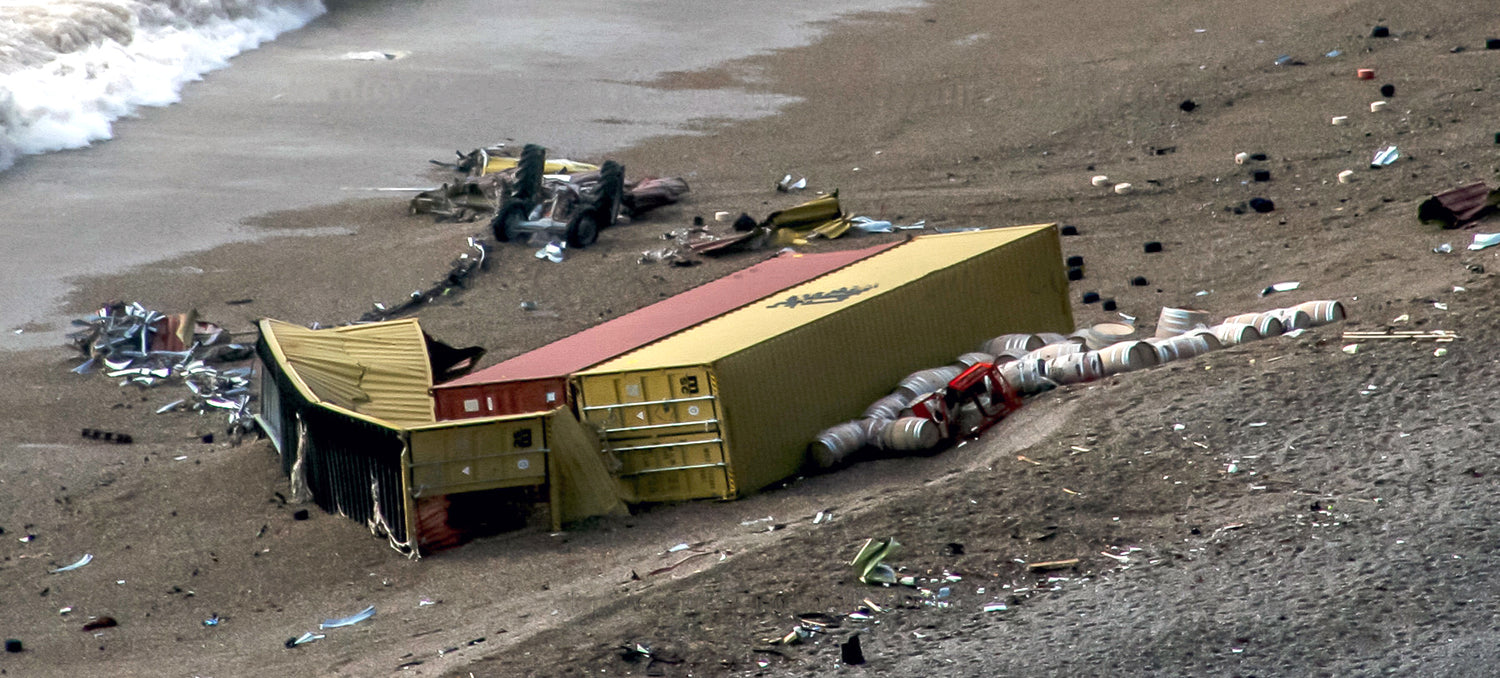
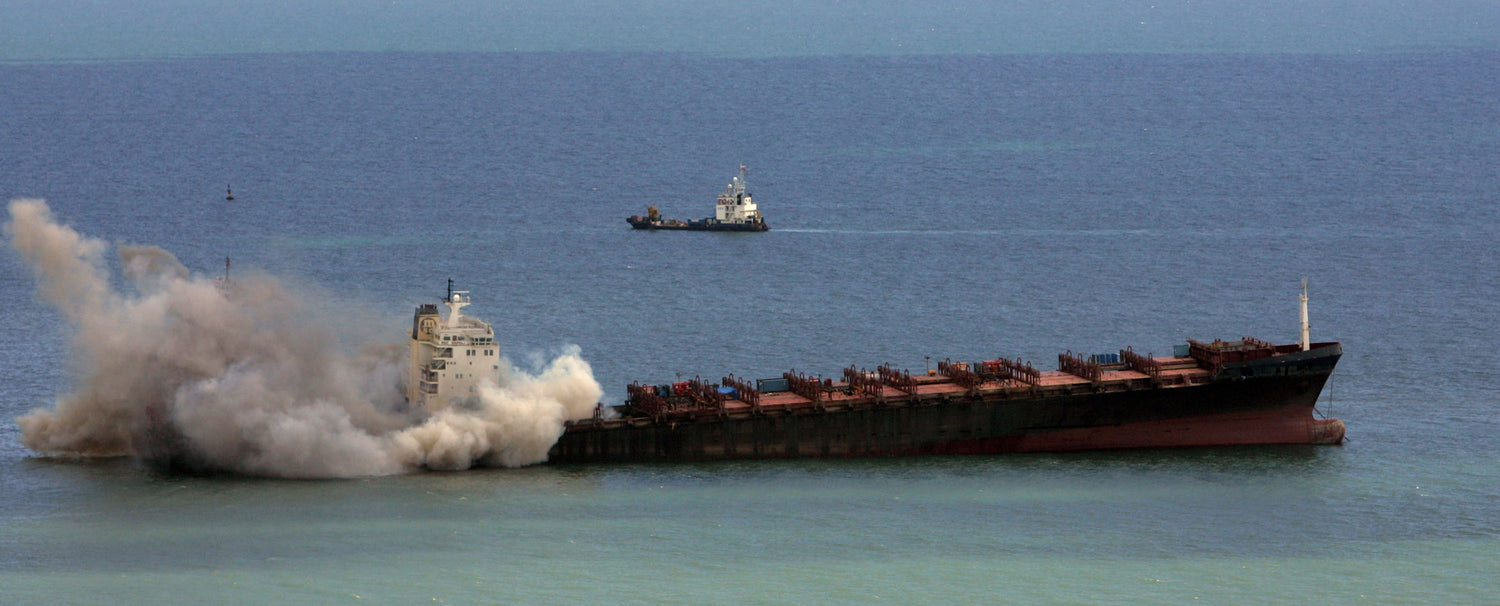
MSC Napoli
-
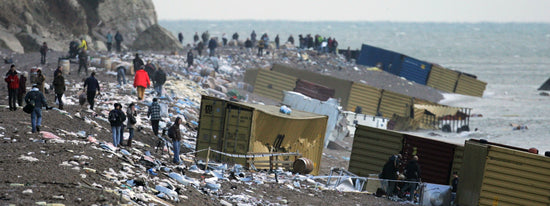
In the morning of January 18th 2007, a 62,000 tonne container ship, the MSC Napoli encountered a heavy storm, in the English Channel.
With waves reaching over 9m high, the ship began to pitch heavily. Slamming down into the water fractured the hull, resulting in catastrophic damage.
With a flooded engine room and no electrical power, the master and its 26 crew abandoned ship.
Stopped in the water, with her starboard side exposed to the wind and sea, it was decided that the MSC Napoli was taken in tow to Portland, Dorset. But the weather conditions were too severe.
Concern increased regarding her condition and in order to prevent the vessel from breaking up or sinking at sea, she was deliberately beached in Branscombe Bay, Devon on 20 January 2007.
-
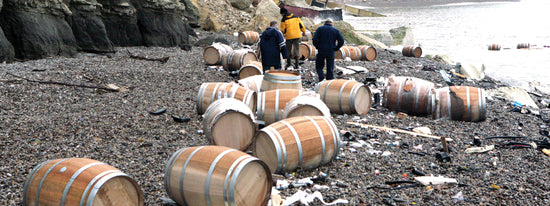
Tilting heavily, from taking on so much water, 114 containers were lost from the deck of the ship. 80 of these were washed ashore, most were later recovered.
In total, the ship was carrying 2,300 containers and 3,800 tonnes of oil.
Its assorted cargo included explosives, fertiliser, weedkiller, car engines, car parts, chocolate, Polish bibles, vodka, shampoo, wine, coffee, perfume, dog biscuits, frozen ducks and nappies.
Cargo from broken containers, especially lighter plastics, were carried on tides as far as East Sussex.
The dog biscuits however, became an invaluable resource and assisted in soaking up a small proportion of the estimated 302 tonnes of oil that leaked.
-

By the summer of 2007 it was decided to try to re-float the Napoli. And although it was successfully re-floated, the vessel was too badly damaged to be towed, so it was dismantled instead using explosives to separate the bow section from the stern.
The bow section was towed to Harland and Wolff shipyard in Belfast for final dismantling, while the stern was left at Branscombe to be dismantled in situ.
The wreck was battered by winter storms in 2008, but was eventually cut up and taken by barge to Rotterdam.
The whole operation took two-and-a-half years.
A scan of the seabed showed that by July 2009, every last trace of the Napoli had been removed.
But it is clear that contents from some of the containers are still an issue.
Photos courtesy of Matt Cardy and Greg Caygill.


